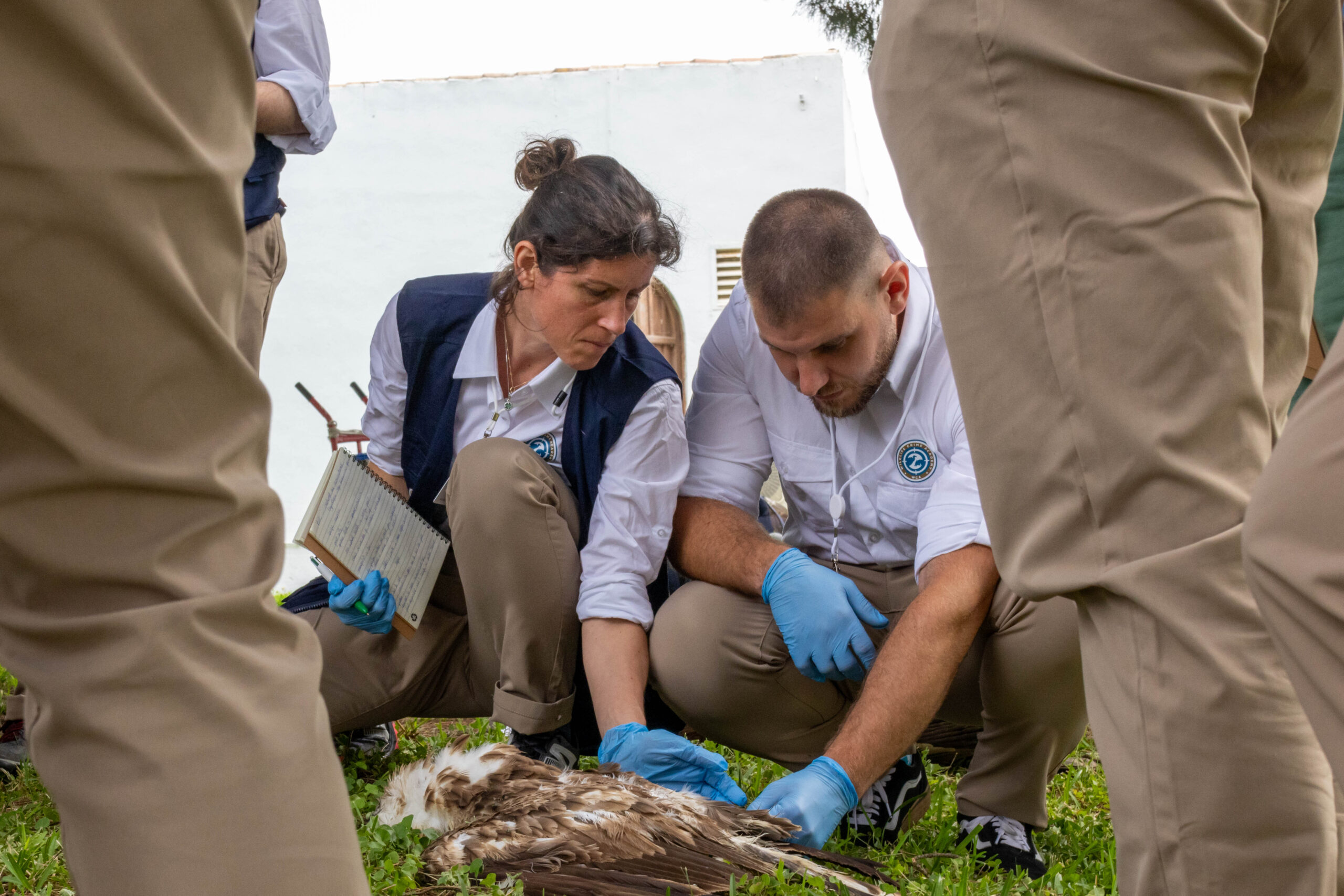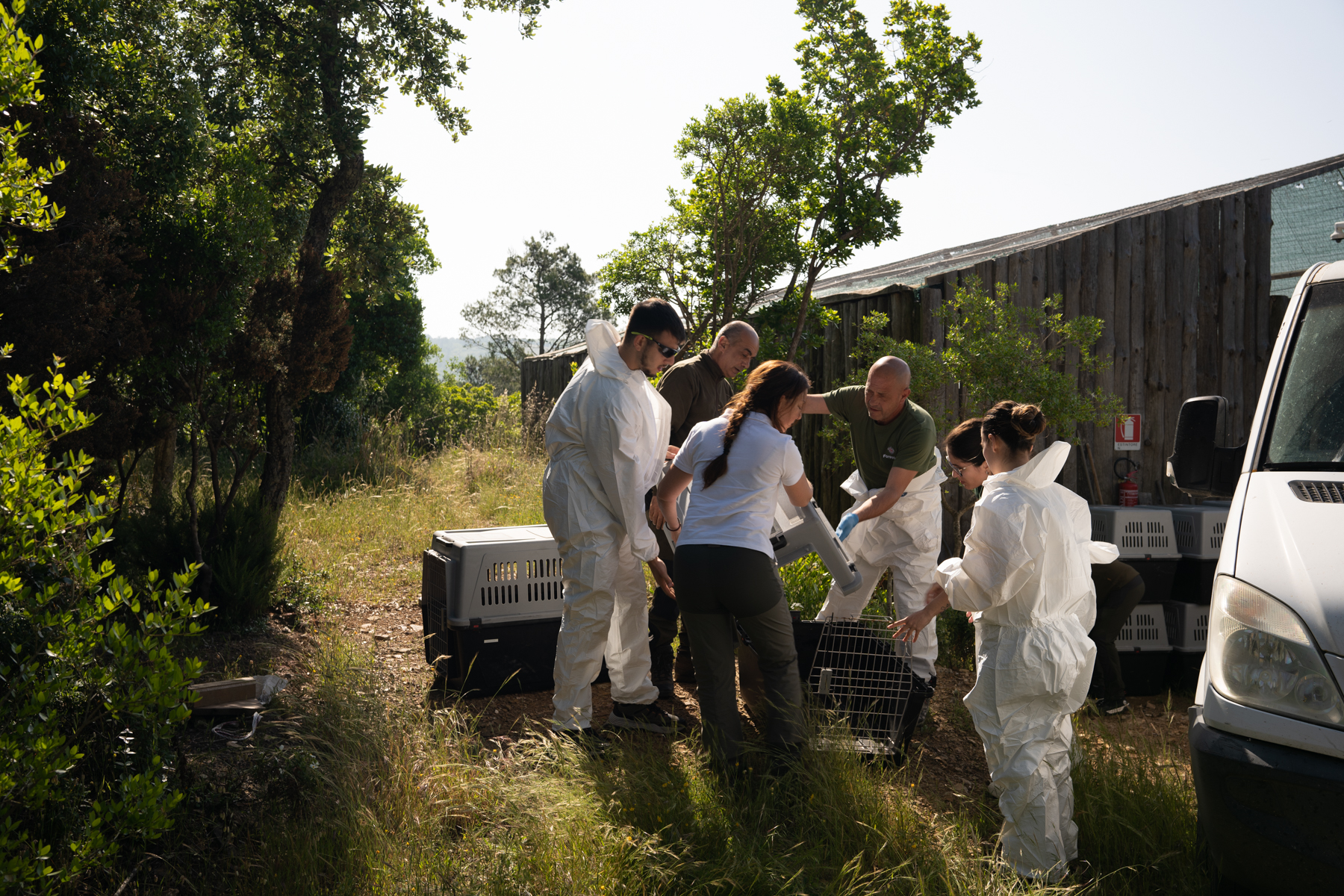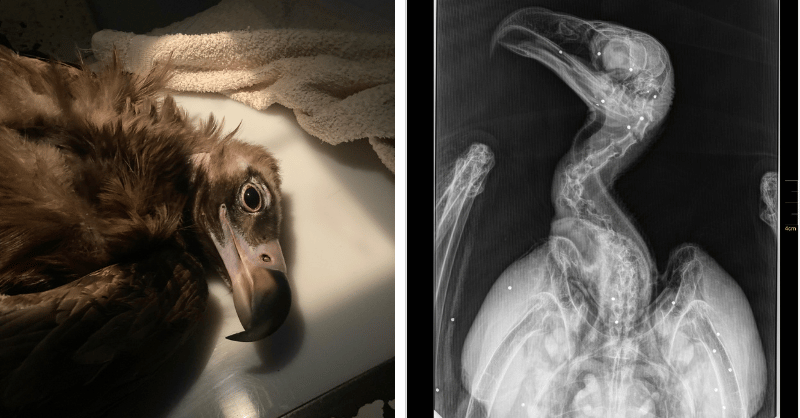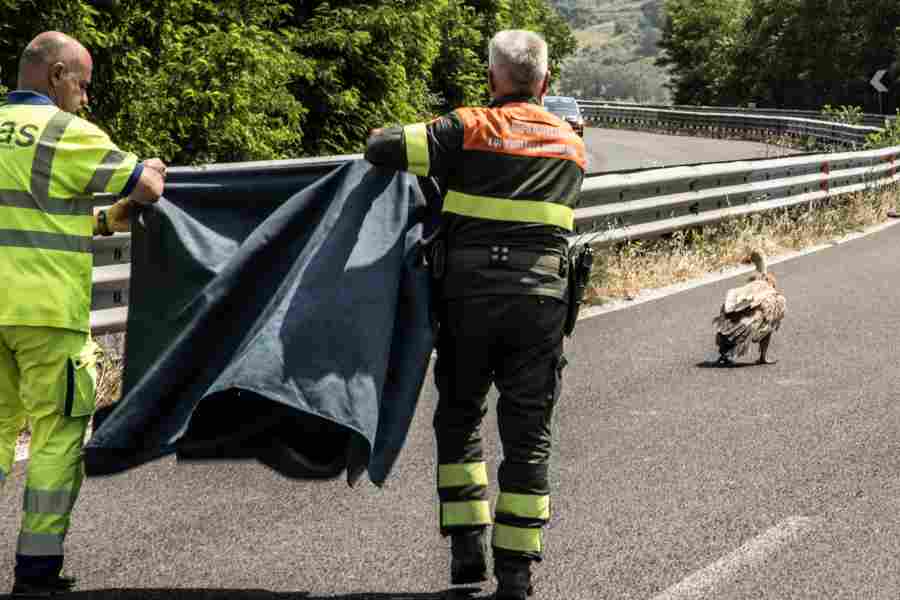In a heartening development, a young Griffon Vulture from Sardinia was recently saved from Sardinian waters. The vulture, struggling off the coast, was handed to a recovery team for rehabilitation and will also support data-driven conservation efforts to revolutionise how we mitigate threats.

Young vulture gets a second chance
Recently, a young Griffon Vulture that hatched in Sardinia was rescued by Corpo Forestale e di Vigilanza Ambientale (Forest and Environmental Surveillance Corps). Operating from their base in Alghero, the team, engaged in routine area monitoring, spotted the vulture struggling in the waters of the Capo Caccia Marine Protected Area – Isola Piana. This location near the cliffs of the Porto Conte Regional Natural Park has long been a habitat for Griffon Vultures. The Forest Corps handed over the young vulture to a team led by veterinarian Marco Muzzeddu at the Wildlife Recovery Center of the Forestas Agency in Bonassai, Sassari. The experts will apply rehabilitation protocols to prepare the vulture for release back into the wild after a recovery period.


Diagnostic and environmental insights
Under a collaboration between the Department of Veterinary Medicine at the University of Sassari (Uniss) and Istituto Zooprofilattico Sperimentale Della Sardegna (Experimental Zooprophylactic Institute of Sardinia), laboratory analyses will be conducted. These tests will aid in diagnosis and gather information about the vulture’s environment. Blood tests will determine levels of heavy metals and residues of veterinary drugs. The data collected throughout the recovery process will be collated and uploaded onto a shared platform, as recently approved by the Directorate General of the Department of Environment’s Nature Protection Service. This comprehensive approach to conservation has been advanced by the Agenzia Regionale Forestas and Corpo Forestale e di Vigilanza Ambientale as part of the LIFE Safe for Vultures project.
Continuous monitoring for effective conservation
The shared platform will allow for constant and precise monitoring of species mortality data. Forestas will update this platform regularly through its wildlife recovery centres. These centres have been receiving distressed Griffon Vultures since 1986, thanks to the efforts of the Corpo Forestale e di Vigilanza Ambientale, which monitors the region. This collaboration is crucial for the scientific and environmental objectives of the conservation protocol.
A model for conservation success
This practice, in synergy with the scientific support and analysis provided by the University of Sassari and the Experimental Zooprophylactic Institute of Sardinia, will yield vital information about both vulture well-being and their habitat. This methodology can subsequently be extended to other species of high conservation value in Sardinia. The data-driven conservation approach promises to revolutionise how we manage and mitigate threats to these species based on knowledge and facts.
The LIFE Safe for Vultures project
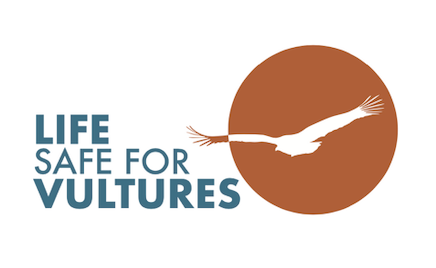
LIFE Safe for Vultures is co-financed by the EU’s LIFE Programme to restore the vulture guild in Sardinia. The University of Sassari leads the project in collaboration with Agenzia Regionale Forestas, Sardegna Corpo Forestale, E-Distribuzione and the Vulture Conservation Foundation. LIFE Safe for Vultures builds on the work of the successful LIFE Under Griffon Wings, with the ultimate objective for Griffon Vultures to regain their historic ranges and distribution areas from the central-eastern part of Sardinia to the south and promote the long-term survival of the species on the island. An additional feeding station will be established south of the island, and 40 additional Griffon Vultures will be translocated and released.

